Posted by Anita on 09.11.06 1:01 PM
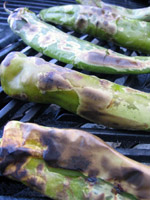 I never met a recipe I didn’t want to futz with. I suspect many people suffer from a similar affliction, but I had no idea how bad a case I had until yesterday.
I never met a recipe I didn’t want to futz with. I suspect many people suffer from a similar affliction, but I had no idea how bad a case I had until yesterday.
I’m helping a friend test a recipe — which in turn is a mashup of two other recipes — for an article he’s writing, so I resolved to follow written directions to a T. Doesn’t seem so hard, does it? But it’s actually a lot more difficult than I’d imagined. No substiting homemade beans for canned? Damn. No leaving out ingredients that offend my purist sensibilities? Argh. And — because he specifically asked me to keep an eye out for missing steps and oversimplifications — no turning to the original recipes for clarifications on ingredients or descriptions. I think my brain might explode. At least the recipe allowed for roasting peppers on the grill, offering the standard broiler method as an alternate. Woo-hoo!
Are you a tinkerer, too?
cooking
6 Comments »




Posted by Anita on 08.20.10 6:06 PM
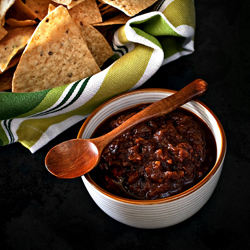 When life gives you lemons, as the saying goes, make lemonade. When life — or, in this case, a distracted farmer — gives you under-ripe tomatoes, make salsa.
When life gives you lemons, as the saying goes, make lemonade. When life — or, in this case, a distracted farmer — gives you under-ripe tomatoes, make salsa.
I’d ordered 40 pounds of San Marzano tomatoes from my favorite farm, planning to use some for my contribution to this month’s CanJam — hosted by What Julia Ate — and to pressure-can the rest for this winter’s cooking.
But when I got home and opened the crates, my heart sunk. I’d gotten two whole cases of tomatoes that ranged from rock-hard-green to just-barely-red, with the vast majority in the not-really-ripe category.
Already up to my ears in green-tomato jam from last season’s garden, I really didn’t want to go that route again. Happily, I remembered — no doubt from some wise Rick Bayless recipe — that the judicious application of heat helps less-than-perfect tomatoes become something better than they ought to be. Roasting tomatoes under a broiler gives them a soft, smoky sweetness, making them the perfect base for sauces and salsas.
The most appealing canner-ready recipe I found for roasted tomato salsa calls for a mix of dried chipotles and cascabel chiles. Having neither on hand, I opted for a mix of locally grown guajillos and some chilhuacles de oaxaca left over from a mole-making adventure. (Although you shouldn’t generally tinker with canning recipes, this kind of one-to-one substitution is fine, so long as the ingredients have the same acidity and moisture levels as the ones they’re replacing.)
The resulting salsa is a mix of bright acidity and smoky complexity, garlicky and rich with chile flavor. It’s definitely the best tomato salsa I’ve ever canned, and a great change from our usual tomatillo salsa. And although I seriously hope I’m never confronted with another case of under-ripe tomatoes, at least I now know exactly what to do with them.

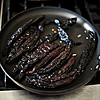
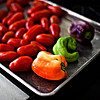
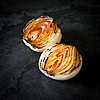
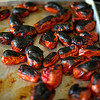
Fire-Roasted Salsa Negra
– adapted from the Ball Complete Book of Home Preserving
Makes eight 8-oz jars or four pint jars
 24 dried chile peppers, such as chipotle, guajillo, ancho, etc.
24 dried chile peppers, such as chipotle, guajillo, ancho, etc.
2 cups hot water
3 pounds ripe plum tomatoes
2 large mild to medium-hot green chiles, such as Anaheims (or bell peppers, if you prefer)
2 small onions
1 head garlic, broken into cloves but not peeled
2 tsp white sugar
1 tsp salt
1 cup white vinegar
Preheat your broiler. Meanwhile, toast the dried chiles in a large, dry skillet over medium heat, about 30 seconds per side, until they are softened and fragrant. Transfer softened chiles to a heatproof bowl and cover with the hot water, weighing down with a saucer or small plate to keep chiles submerged. Soak the chiles for 15 minutes.
Working in batches, transfer soaked chiles and some of their soaking liquid to a blender; puree until smooth. Taste the puree; if you find it bitter, press the puree through a mesh strainer or sieve with a wooden spoon. Continue pressing and scraping until you’re left with a dry lump of seeds and bits of skin with no flesh attached.
Meanwhile, roast the tomatoes, peppers, onions, and garlic under the preheated broiler, turning to roast all sides. When the tomatoes and peppers are blistered, blackened, and softened, and the onions and garlic skins are blackened in spots, remove them from the broiler; this usually takes anywhere from 10 to 20 minutes, depending on the age of your vegetables and the strength of your broiler. The garlic will likely need to come out before other vegetables are done, so keep tongs handy.
Set tomatoes, onions, and garlic aside to cool. Place the peppers in a paper bag and roll the top closed tightly; set aside. Peel and chop all of the vegetables as they become cool enough to handle.
Prepare canner, lids, and jars according to the usual method; keep jars hot until needed.
In a large, stainless-steel saucepan, combine reserved chile puree, chopped roasted vegetables, sugar, salt, and vinegar. Bring to a boil over medium-high heat, stirring constantly. Reduce heat and simmer, stirring frequently, until slightly thickened, about 15 minutes.
Ladle hot salsa into hot jars, leaving 1/2-inch headspace. Remove air bubbles and adjust headspace as needed. Wipe rims and center lids on jars; screw band to fingertip-tight.
Place jars in canner, ensuring they are completely submerged. Bring to a boil and process 8-ounce jars for 15 minutes and pint jars for 20 minutes with the canner lid on. When time is complete, remove canner lid and turn off heat; wait 5 minutes, then remove jars. Cool, check for seals, and store in a cool, dark place for up to a year.
CanJam, locavore, preserving & infusing
20 Comments »




Posted by Cameron on 04.13.08 2:20 PM
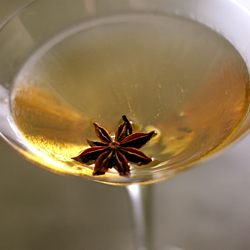 A month or so ago, at last unable to ignore the murmurs of delight circulating around the cocktail world, we sought out a bottle of Rhum Clément Creole Shrubb, an orange liqueur from Martinique. Made by infusing a blend of white and aged rums with spices and bitter orange peels, Creole Shrubb turns out to be quite different from the usual, more-neutral orange liqueurs. Its complexity intrigued us, but because we knew its dusky mysteriousness would make it an imperfect match for existing recipes, the Creole Shrubb languished on our “try me” shelf.
A month or so ago, at last unable to ignore the murmurs of delight circulating around the cocktail world, we sought out a bottle of Rhum Clément Creole Shrubb, an orange liqueur from Martinique. Made by infusing a blend of white and aged rums with spices and bitter orange peels, Creole Shrubb turns out to be quite different from the usual, more-neutral orange liqueurs. Its complexity intrigued us, but because we knew its dusky mysteriousness would make it an imperfect match for existing recipes, the Creole Shrubb languished on our “try me” shelf.
Last week, we received a bottle of Domaine de Canton, a ginger-cognac liqueur created by John Cooper (brother to Rob Cooper, creator of St. Germain) that has received a fair bit of positive press. As soon as I heard “ginger,” a light bulb went off in my head. Perhaps we’d finally found a companion for Creole Shrubb’s exotic overtones — and just in time for this month‘s fruit liqueur edition of Mixology Monday.
Creole Shrubb’s orange spice would be a natural match for the gingery Canton. Their families would get along, knit together by a shared history of tropical French colonialism: Creole Shrubb from les Antilles, Domaine de Canton with its roots in Indochine. Creole and Canton would fall in love and have beautiful little minibar bottles. Truly, I am the yenta of booze.

And yet, while the path to true love glowed ahead like a sunset on tropical shores, there was the danger this marriage of two sweet principals could become a sticky, sappy affair that would destroy itself in an explosion of pet names and babytalk. (“No, I wuv *you*, Cherie!”) Clearly, a sharp, antiseptic, perhaps even military chaperone was necessary — a no-nonsense personality to temper the flighty natures of our two romantics. I scanned the liquor cabinet and a grizzled naval officer stepped forward: Plymouth gin.
I must modestly admit that the first meeting of the three was a roaring success. I began by introducing them in equal amounts, reasoning that none would easily get the upper hand. These proportions turned out to be nearly ideal. When it seemed that the conversation could use a bit of lubricant, I blessed the vessel with a drop of bitters, and the addition brought the group together in even greater harmony.
Should you wish to arrange your own meeting, I have provided a guide below. If you must substitute, be prepared to tinker with the proportions. The penetrating sting of the Plymouth gin is especially (and surprisingly) important.

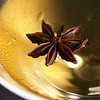



Asian Orange
1 oz Plymouth gin
1 oz Domaine de Canton
1 oz Rhum Clément Creole Shrubb
2 dashes Angostura bitters (or one dainty drop of Fee Brothers Whiskey Barrel Aged)
Combine in an ice-filled glass and stir until chilled. Strain into a chilled cocktail glass. Garnish with star anise, if desired.
Drink of the Week, drinks, Mixology Monday, recipes
8 Comments »




Posted by a Special Guest on 03.28.08 7:03 AM
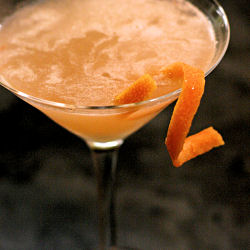 Editor’s note: Our pal Sean returns once again to Drink of the Week guest-bartender duties with a delicious, prettily pink cocktail inspired by the fabulous girl in his life.
Editor’s note: Our pal Sean returns once again to Drink of the Week guest-bartender duties with a delicious, prettily pink cocktail inspired by the fabulous girl in his life.
—-
Last week, we celebrated one lunar year with our daughter dog, Reese. Like proper San Franciscans, we simply had to throw a cocktail party to, um, mark the occasion. But what to serve? Salty dog? Perhaps. Bark-tini? Ugh, no. Greyhound? Now we’re talking.
Nothing more than vodka and grapefruit juice, the Greyhound can be lovely with brunch, but it’s maybe not the most interesting option for cocktail hour. Luckily, we had just finished our inaugural batch of pompelmocello, and so we decided to sub that in for some of the vodka. And being cunning linguists as we are, we dubbed our newfound concoction the Italian Greyhound.
The name was apt, for when we were researching breeds while ‘shopping’ for a dog, Italian Greyhounds were front-runners in our consideration. Apartment-sized, trainable and loving, they seemed like a good match for us. The one deterrent was that they have a tendency to burrow under blankets and pillows, and if you accidentally and unknowingly sit on one in its ersatz lair, you can kill it. Maybe, we thought, we wanted something a little sturdier. In the end, we got our Manchester Terrier mix pound puppy, who at 17 pounds swaggers with the attitude of a dog many times her size.
Alas, there already exists a cocktail called the Italian Greyhound, basically your standard Greyhound with a float of Campari on top. It’s just as well, for in tinkering with the recipe further, I decided vodka wasn’t really the way to go anyhow. In order to convert the greyhound into something worthy of a cocktail glass, I had to bump up the booze-to-juice ratio, and vodka just wasn’t bringing anything to the party. Gin, on the other hand, offered enough complexity to offset the acidity of the juice.
All that remained from the original inspiration was grapefruit juice, and smaller amounts of it, but I still wanted to honor its provenance. Anita suggested dubbing it the Levriero — Italian for greyhound — and so a new cocktail was fledged.
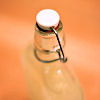

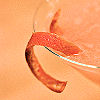

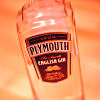
Levriero
1 oz limoncello (or pompelmocello)
1 oz gin
2 oz red grapefruit juice
Shake with ice and strain into a chilled cocktail glass. Garnish with mint sprig or a twist.
Drink of the Week, drinks, holidays & occasions, preserving & infusing
6 Comments »




Posted by Anita on 03.14.08 7:07 AM
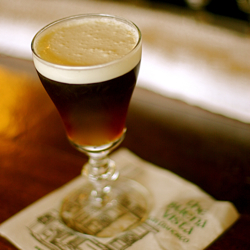 Happy St. Paddy’s Day!
Happy St. Paddy’s Day!
A wee bit early, you say? Nae, says I.
Although St. Patrick’s Day is usually observed on March 17, this year — with Easter coming so early — a bit of liturgical arcana has moved mountains. Because Catholic rules prohibit the celebration of saint’s feasts during Holy Week, the Church has actually moved St. Patrick’s Day to March 14. (For those of you keeping score at home, the last time this ecclesiastic clash occurred was 1940, and the next time will be 2160… so we’ve got a few years to plan.)
Most bishops are none too happy about drunken revelry during the holiest week of the year, and the clever ones are supporting the official shift by offering dispensation to their flocks, absolving them of the sin of carousing on a Lenten Friday, which is traditionally a day of abstinence. As you might expect, this once-in-most-lifetimes rescheduling has plenty of civic celebration-mavens in a tizzy — apparently, not everyone got the memo, and most cities (and nearly every bartender I’ve asked) will still be trotting out barrels of green beer on Monday.
But regardless of when you’re celebrating, there’s got to be a better glass to raise than watery, shamrock-colored beer. Please, I implore you: Grab yourself a snoot of Jameson (or Bushmills, if you’re of a Protestant sort), a pint of Guinness, a Black Velvet, or something else — anything else! — that reminds you of the Land of Saints and Scholars.
One of the best of your options, Irish Coffee was brought to America in the early 1950s by the then-owner of San Francisco’s Buena Vista Cafe, Jack Koeppler. Haunted by the drink he’d enjoyed at Shannon Airport before a seaplane flight home from the Emerald Isle, Koeppler and his friend Stanton Delaplane, a travel writer for the San Francisco Chronicle, tinkered and experimented for months to replicate the formula. Koeppler even made a return trip to Ireland — all in the name of “research”, of course — and brought back the official recipe from Joe Sheridan, the bartender who (by most accounts) invented the drink. Even today, enjoying an Irish Coffee at the Buena Vista remains one of the few legitimate reasons for a trip to Fisherman’s Wharf, an otherwise benighted stretch of The City best left to the socks-and-sandals set.
The cafe caused a tempest in a coffee cup last year when word leaked that the recipe had — gasp! — been altered. Although the current owner claims that cost was not a factor, the fact of the matter is that the Buena Vista abandoned their private-label whiskey in favor of off-the-shelf Tullamore Dew. The subtle change is lost on most customers, and the ol’ BV still turns out more than 2,000 Irish Coffees a day to windswept tourists as they toddle off the cable cars at the end of the line. I assure you that, Tullamore Dew or no, it tastes a heck of a lot better than green beer.

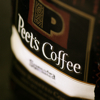
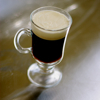
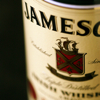
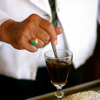
Irish Coffee
4oz fresh, hot coffee
2oz Irish whiskey
whipping cream
sugar cubes
Pour hot water into a footed coffee glass to bring it to temperature. Meanwhile, whip the cream lightly, just enough so that it will be able to float atop the drink, but not until peaks form. Pour the hot water out of the glass, and add two sugar cubes. Fill the glass about 3/4 full with hot coffee, and stir to dissolve the sugar cubes. Add the shot of whiskey, and top with the lightly whipped cream, pouring over a spoon to keep the layers distinct.
bar culture, coffee & tea, Drink of the Week, drinks, holidays & occasions
11 Comments »




Posted by Anita on 02.01.08 6:54 AM
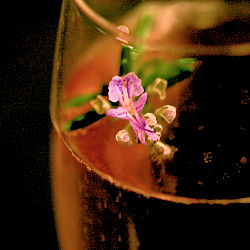 My friend Sam brought us the most fabulous hostess gift: A vintage copy of Robert Vermiere’s Cocktails – How to Mix Them. It’s a little pocket-sized gem of a book, best known as one of the first sources for the Sidecar. (It’s possible Harry MacElhone’s ABCs of Mixing Cocktails beat Vermiere to the punch, but both sport a 1922 publication date so I’m content to call it a draw.)
My friend Sam brought us the most fabulous hostess gift: A vintage copy of Robert Vermiere’s Cocktails – How to Mix Them. It’s a little pocket-sized gem of a book, best known as one of the first sources for the Sidecar. (It’s possible Harry MacElhone’s ABCs of Mixing Cocktails beat Vermiere to the punch, but both sport a 1922 publication date so I’m content to call it a draw.)
I spent a happy afternoon flipping through the book’s age-darkened pages, amusing myself by deciphering the spidery notes in its margins scribbled by some long-ago drinker. It’s a treasure trove of possibilities.
Alas, the spirit is willing, but the flesh is weak.
I’ve had no desire whatsoever to experiment, much less to imbibe. Like nearly everyone else in my area code, I’ve been slammed by the bug that doctors are calling the Super Cold. I’ll spare you the litany of disgusting symptoms and secondary infections, but I feel compelled to brag that I made a nurse say “Eeeww!”
After a trip to the emergency room and enough prescriptions to supply a small pharmacy, I’m finally back among the living. I even managed to have a drink or two last night. But frankly, the idea of tinkering with proportions or doing a lot of in-depth historical research is still making me a little woozy. Luckily, there were enough great bubbly-based drinks flowing at the Cockails and Canapes party that I won’t have to leave you in the lurch this week. Here’s one of my favorites:
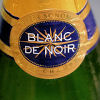
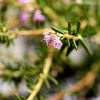

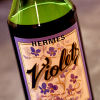


Le Mistral Mauve
1/2oz to 1oz creme de violette
1/2oz rosemary-infused simple syrup, or to taste
Brut Champagne or other dry sparkling wine
Measure the violette and rosemary syrup into a Champagne flute. Top with a dry bubbly, and garnish with a blossoming herb. (We used rosemary, but any pretty sprig will do.)
To make rosemary syrup, measure equal parts water and sugar into a saucepan. Bring to a simmer over medium-low heat, and stir occasionally until sugar is completely dissolved. Add a large bunch of rosemary to the pan, and remove from the heat. Allow the rosemary to steep in the syrup until its flavor is very pronounced. Remove the rosemary, and strain the syrup through a fine sieve (or a coffee filter, if you want to be fancy).
I usually add a fresh sprig of rosemary to the syrup bottle; it reminds me what’s inside, and has the side effect of looking rather charming. Flavored syrup keeps in the refrigerator for at least a week. Other drinks that use rosemary syrup include the Gin-Gin Cooler and the Rosemary Five; It’s also lovely in sparkling water as a homemade soda.
EDITED TO ADD: If you can’t find creme violette in your area, Monin makes a lovely non-alcoholic violet syrup that you can use in its place. Lots of restaurant supply stores sell these syrups, or you can buy them on Amazon.
Drink of the Week, drinks, recipes, wine & bubbly
9 Comments »




Posted by Anita on 01.11.08 7:48 AM
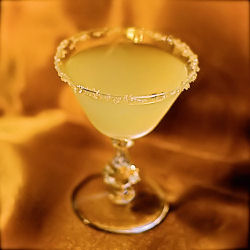 Invented in France during the years of America’s “noble experiment†with Prohibition, it’s puzzling that the Sidecar has yet to take its proper place in the modern cocktail renaissance. It’s a glorious drink when well made, but it does subject the bartender to a little bit of fuss.
Invented in France during the years of America’s “noble experiment†with Prohibition, it’s puzzling that the Sidecar has yet to take its proper place in the modern cocktail renaissance. It’s a glorious drink when well made, but it does subject the bartender to a little bit of fuss.
As with many simple drinks, the quality of the ingredients can make or break this recipe; Robert Hess does an excellent job detailing the contributions of the various components. But even when using top-shelf brands, you’ll need to do a fair bit of balancing. Brandies vary widely in strength and sweetness, and even plain-old Eureka lemons change in acidity throughout the growing season.
The traditional recipe of equal parts brandy, triple-sec, and lemon juice is very sweet, especially when served in the customary sugar-rimmed glass. Although I won’t go as far as David Embury — who rationalized that a Sidecar is simply a Daiquiri clone, and advocated a bone-dry ratio of 7:2:1 — I do think that all but the sweetest palates will prefer something closer to two parts brandy to one part each Cointreau and juice.
Like many old-time recipes, the Sidecar has undergone a dizzying list of modifications over the past 70 years. Beyond modernizing the proportions, this recipe stands up to a fair bit of tinkering. Varying the base liquor gets you a Chelsea Sidecar (gin), a Boston Sidecar (rum plus brandy), or an Applecar (Applejack). Swapping lime juice for the lemon, or tweaking Cointreau for another liqueur yields even more alternatives.

For this month’s Mixology Monday — a Brandy theme, hosted by the lovely Marleigh at over at Sloshed! — we took our inspiration from a drink we enjoyed at Cindy’s Backstreet Kitchen. The menu listed Belle de Brillet pear Cognac in place of the brandy (and you know we loves us some of that). Alas, the resulting mixture was jaw-numbingly sweet, but the concept was just too good to ignore; off we went to the home laboratory.
First we tried decreasing the sweet components: Reducing the Belle de Brillet diminished the beautiful pear essence of the drink, and halving the Cointreau flattened everything out. Starting out from the other direction, increasing the lemon juice made things too puckery. Dispensing with the sugared rim did help a bit, but it seems a shame to lose this sparkle.
At last, we turned to the Clear Creek Pear Brandy (or, better still, its sibling eau de vie in the captive-pear bottle). Hooray! We’d found plenty of pear and fruity warmth without the cloying sweetness.
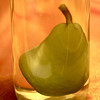

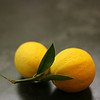
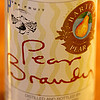
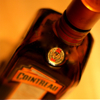

Le Side-car aux Poires
1-1/2 oz pear brandy
3/4 oz Cointreau
3/4 oz lemon juice
Before squeezing the lemon, rub the cut side along just the outside edge of a chilled cocktail glass. (Resist the urge to dip the rim in water or juice — as you see sloppy bartenders do just about everywhere — or you’ll end up with sugar inside the glass and floating in your drink.) Dip the edge into a plate of sugar, rolling to create a sugar rim.
Shake the brandy, Cointreau, and juice with ice. Strain into the prepared cocktail glass.
Drink of the Week, drinks, Mixology Monday, recipes
11 Comments »




Posted by Anita on 12.06.07 6:19 PM
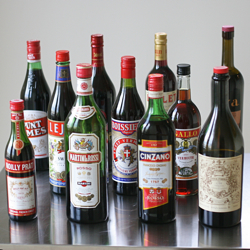 Restocking the bar in preparation for holiday guests, we found we’d managed to squirrel away no less than four half-empty bottles of sweet vermouth. Shaking our heads at our folly, we decided to figure out which one we liked best and toss the others. Sure, we needed Carpano Antica for our favorite cold-weather Manhattan, but how different could the others be?
Restocking the bar in preparation for holiday guests, we found we’d managed to squirrel away no less than four half-empty bottles of sweet vermouth. Shaking our heads at our folly, we decided to figure out which one we liked best and toss the others. Sure, we needed Carpano Antica for our favorite cold-weather Manhattan, but how different could the others be?
Plenty.
After some quick sips, it became apparent that even among the big three brands — Cinzano, Noilly Pratt, and Martini & Rossi — the differences were astounding. The lone French-made bottle, the Noilly Pratt was the most herbal, and most bitter, of the three …a potent reminder of vermouth’s linguistic origins in “wormwood”. The original sweet vermouths came from Italy — you’ll often see red vermouth referred to as Italian vermouth in old recipes — so it’s not surprising that we felt the Martini and Cinzano brands were closer to our ideal. (Some day we’ll have to check whether the reverse is true: Do the French make better dry vermouth, given its historic roots on the other side of the Alps?)
On our next trip to the liquor warehouse, our eyes were opened. We’d never noticed just how many sweet vermouths were on the shelf! With most bottles priced well under $10, why not round out our collection and get to the bottom of which was best? My sister and her husband were on their way to town, and a sweet vermouth tasting seemed just the ticket for four cocktail aficionados to while away the holiday weekend.
With a stack of shot glasses and a pile of notepads at the ready, the tastings began.
Our first round featured the supermarket stalwarts: Martini & Rossi, Cinzano, and Noilly Pratt (identically priced around town at $5.99 to $7.25). Just as we’d found in our earlier un-juried tasting, the Noilly Prat stood out from the pack: Its “herbal” “bite” was pegged as “very bitter” and “medicinal” by all. Tasted neat, Cinzano’s sweetness was its downfall: We called it “cloying candy” and “marshmallow sweet”, overwhelming its less obvious “citrus and spice” notes. The Martini & Rossi became the bottle to beat, universally praised for its “smooth”, “balanced”, “fruity warmth”.
The lesser-known vermouths in our next tier proved that you mostly get what you pay for. Although the Boissiere ($7.29) was dubbed “not bad” by three tasters, the Gallo ($2.99) rated “foul”, “bad”, and “not pleasant” across the board. The true stinker was Lejon ($3.99), which sent us running for our water glasses: Strong “vinegar” notes and “artificial” flavors earned it a last-place finish: “Blech!” indeed.
Next up, a pair of boutique options. At $29, Carpano Antica’s the priciest of the lot, but it’s a house favorite for good reason. Its “very smooth” profile was noticeably more “spicy and deep” than its mainstream competitors. All of us noted its sweetness, but felt it offered a “chewy”, “caramel” complexity rather than a brash sugar assault. Our local entrant, Vya ($19) showed its “grapey” pedigree — it’s made by Quady, the winery behind the once-trendy Elysium black muscat. With “piney” hints of “juniper” and a “snappy” finish, one taster found it a bit too “menthol” for his palate.
We also tasted a flight of red-wine based aperitifs: The French-made Lillet Rouge and Dubonnet, and the Italian Punt e Mes. Too far off the beaten path to serve as straight replacements for sweet vermouth, they’re more like kissing cousins than actual alternatives. Lillet and Dubonnet were pleasant enough to drink on their own; Punt e Mes found few fans due to its very strong bitterness, although it’s a key ingredient in a handful of cocktails.
As a control, we stirred up a set of Manhattans to see if the differences between brands were too subtle to be noticed in mixed drinks. All of us agreed that the Carpano’s complexity shone through the iced-down whiskey to make a worthy upgrade. Of the non-boutique brands, the gents were aligned in their preference for Martini in their Manhattans. Meanwhile, I preferred the Cinzano — its sweetness isn’t such an issue when whiskey’s there to tame it — and my sister enjoyed both Italian vermouths equally. The Noilly Prat’s herbal tones were a little less obnoxious when mixed and chilled, but none of us cared for its flavor.
Our Manhattan-loving brother felt strongly that the only ‘proper’ drink of the bunch was the Martini & Rossi version. He allowed that the Carpano variation was lovely, “just not a Manhattan.” The dark-horse Boissiere Manhattan was deemed an acceptable option; if for some reason you find yourself in possession of a bottle, keep it… but none of us would recommend hunting it down for special purchase.
So which sweet vermouth should you buy? The Carpano Antica is our hands-down favorite for Manhattans, but it’s a pricey (and potentially unnecessary) option in many other drinks. If you’re limiting yourself to one all-purpose bottle, the Martini & Rossi does quite well. The Cinzano’s added depth makes it a natural in drinks with a strong bitter or sour component to counter its sweetness, but it’s a less-than-ideal pairing with other sugared liquors or syrups. Both are affordable enough that, if your space allows, there’s no reason to choose between the two big Italians.
Speaking of storage: Many wise folks will tell you to keep your vermouth in the fridge, and they’re right. It’s wine, after all, and vermouth can turn from ambrosial to undrinkable when improperly handled. Spoilage takes a bit longer with vermouth than table wine, courtesy of the former’s higher alcohol content, but even a fortified wine will eventually turn. Do yourself a favor and choose 375ml half-bottles when you find them — tossing half an oxidized bottle undoes any potential savings you’d see by buying the 750ml size — and keep the vermouths you really care about in cold storage as much as you practically can.
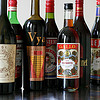
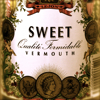
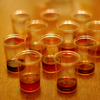
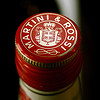

drinks
9 Comments »




Posted by Anita on 10.12.07 7:09 AM
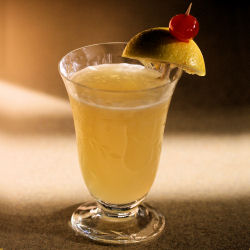 I distinctly recall the first time I drank a Whiskey Sour. Our friends Jason and Maggie, eking their way through grad school, lived in East Palo Alto (pre Four Seasons, pre Ikea). Their apartment sat tucked behind a bungalow facing the 101 frontage road. The neighbor who lived in said bungalow was an affable fellow named Drew, a long-haired techie, musician, and tinkerer. The bungalow inevitably became the scene of numerous jam sessions: late-night sing-alongs fueled by a potent mixture of whiskey, powdered sugar, ice, and the juice of the Meyer lemons that grew right outside Drew’s kitchen window… all whizzed up in the blender. (Hey, we were young.)
I distinctly recall the first time I drank a Whiskey Sour. Our friends Jason and Maggie, eking their way through grad school, lived in East Palo Alto (pre Four Seasons, pre Ikea). Their apartment sat tucked behind a bungalow facing the 101 frontage road. The neighbor who lived in said bungalow was an affable fellow named Drew, a long-haired techie, musician, and tinkerer. The bungalow inevitably became the scene of numerous jam sessions: late-night sing-alongs fueled by a potent mixture of whiskey, powdered sugar, ice, and the juice of the Meyer lemons that grew right outside Drew’s kitchen window… all whizzed up in the blender. (Hey, we were young.)
Like the Cape Codder and the Gin & Tonic, the Whiskey Sour is one of those highly adaptable libations that can be successfully concocted nearly anywhere. The lemon juice puts it a bit beyond the reach of the average hotel minibar, but anyone with access to an airport lounge, a rural grocer, or a even a half-decent convenience store can enjoy a respectable version without much fuss.
Depending on your personal palate and your choice of whiskey — in deference both to old memories and my mom’s limited provisions, we brought out the Beam — do vary the amount of simple syrup. Canadian, bourbon, blended, even rye… they’re all fair game here. Our bottom-shelf version, complete with a WalMart nuclear cherry on top, was perfectly fine; I can hardly wait to mix one up with the good stuff when I get home.
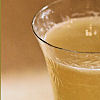
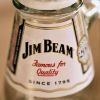
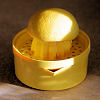

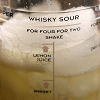
Whiskey Sour
1-1/2 oz fresh lemon juice
2 to 2-1/2 oz whiskey
1/2 to 1-1/2 oz simple syrup
lemon wedge and cherry for garnish
Shake the juice, whiskey, and syrup with ice; strain into a chilled sour glass or rocks glass. Garnish with the lemon wedge and cherry.
Drink of the Week, drinks, recipes
7 Comments »




Posted by Anita on 10.05.07 7:04 AM
 As I walked down the escalator to baggage claim at the Las Vegas airport, Mom glanced at the jacket slung over my arm, a wide smile breaking across her face.
As I walked down the escalator to baggage claim at the Las Vegas airport, Mom glanced at the jacket slung over my arm, a wide smile breaking across her face.
“Did you need that coat at home?” she quipped. “You sure won’t need it here!”
When temperatures hover in the 90s in the late afternoon, even in October, you begin to wonder if Las Vegas might not be enchanted by some sort of spell: a warped incantation that keeps the Southern Nevada desert sparkling-hot at the same time as the rest of the country is starting to think seriously about airing out their woolen sweaters and setting a savory stew on the fire.
The notion of a mischievous spirit was never far from my mind as I dug deeper into my cocktail books and online sources for another suitable Strega cocktail. As I sweltered away, I sampled tall drinks, fizzy drinks, and citrus-spiked drinks designed to beat the heat. But they all felt a little blah, like unimaginative variations on better-known concoctions. I kept wishing that I could add an ingredient or two, play with proportions, and generally jack up the flavors. But tempting though that notion was, it’s entirely contrary to the purpose of “Raiders of the Lost Cocktail” — to rescue an existing recipe from cocktail oblivion.
Digging through the eGullet archives for cocktail-book suggestions for further research, I stumbled upon an old Strega thread. In the midst of a general discussion of Strega’s merits and quirks, I noticed a mention of an unnamed Strega cocktail served at Seattle’s Troiani restaurant. Enchanted by the description of a drink that “starts fresh and strong and ends like a wisp of dessert”, I knew I had to add this to my trials.
Unfortunately, the post dated from the restaurant’s early days… many moons and several staff-changes ago. Ever hopeful, I called Troiani one afternoon and asked if anyone in the bar might remember the drink’s proportions. Unsurprisingly, the answer was no. (Well, more like “Huh? What’s Stray Gull?”) Nobody could even tell me who might have tended bar there, all those eons ago — two and a half years is an eternity in the restaurant world.
All I had to go on was a list of ingredients in the post: Vodka, Strega, crème de cacao, orange and lemon juice, with a vanilla cream float. Nothing like that existed in any of the books at my disposal, nor in CocktailDB or any other familiar online source; it must have been someone’s in-house creation. Over on a site called DrinksMixer — where their ‘Most Popular’ sidebar inauspiciously lists the Apple Martini, Jager Bomb, and Long-Island Ice Tea among the top five — I noticed a similar drink, with a most appropriate name.
If it were mine to tinker with, I’d suggest you make the Sun Witch with a lighter hand on the creme de cacao. If you do as Troiani’s sadly anonymous bartender did, adding lemon juice and vodka, you’ll enjoy a lighter finish… at least as far as these sorts of milkshake drinks go. If you’re in the mood for a dessert cocktail, you could do far worse than to fall under the Sun Witch spell.
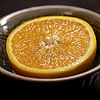
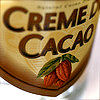
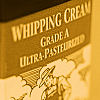
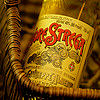
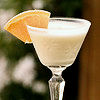
Strega Sun Witch
1 oz Strega liqueur
3/4 oz white creme de cacao
3/4 oz orange juice
1 oz whipping cream
Orange slice, for garnish
Shake with ice, and strain into a cocktail glass. Garnish with a slice of orange.
Sun Witch a la Troiani
1 oz Strega liqueur
1/2 oz vodka
1/4 oz white creme de cacao
1/2 oz orange juice
1/2 oz lemon juice
1 oz whipping cream
vanilla extract or vanilla liqueur, to taste
Lightly whip the cream with the vanilla; set aside. Shake the remaining ingredients with ice, and strain into a cocktail glass. Top with the vanilla cream, and garnish with a light grating of orange zest.
Drink of the Week, drinks, other blogs, recipes
3 Comments »




 I never met a recipe I didn’t want to futz with. I suspect many people suffer from a similar affliction, but I had no idea how bad a case I had until yesterday.
I never met a recipe I didn’t want to futz with. I suspect many people suffer from a similar affliction, but I had no idea how bad a case I had until yesterday.



 When life gives you lemons, as the saying goes, make lemonade. When life — or, in this case, a distracted farmer — gives you under-ripe tomatoes, make salsa.
When life gives you lemons, as the saying goes, make lemonade. When life — or, in this case, a distracted farmer — gives you under-ripe tomatoes, make salsa.




 24 dried chile peppers, such as chipotle, guajillo, ancho, etc.
24 dried chile peppers, such as chipotle, guajillo, ancho, etc.


































 I distinctly recall the first time I drank a Whiskey Sour. Our friends Jason and Maggie, eking their way through grad school, lived in East Palo Alto (pre Four Seasons, pre Ikea). Their apartment sat tucked behind a bungalow facing the 101 frontage road. The neighbor who lived in said bungalow was an affable fellow named Drew, a long-haired techie, musician, and tinkerer. The bungalow inevitably became the scene of numerous jam sessions: late-night sing-alongs fueled by a potent mixture of whiskey, powdered sugar, ice, and the juice of the Meyer lemons that grew right outside Drew’s kitchen window… all whizzed up in the blender. (Hey, we were young.)
I distinctly recall the first time I drank a Whiskey Sour. Our friends Jason and Maggie, eking their way through grad school, lived in East Palo Alto (pre Four Seasons, pre Ikea). Their apartment sat tucked behind a bungalow facing the 101 frontage road. The neighbor who lived in said bungalow was an affable fellow named Drew, a long-haired techie, musician, and tinkerer. The bungalow inevitably became the scene of numerous jam sessions: late-night sing-alongs fueled by a potent mixture of whiskey, powdered sugar, ice, and the juice of the Meyer lemons that grew right outside Drew’s kitchen window… all whizzed up in the blender. (Hey, we were young.)









